The perfect greenhouse “doesn’t exist yet, but we know the requirements. It must be simple to construct, easy to manage, environmentally sound, and pleasing to the eye. Some day soon the horticultural equivalent of Henry Ford (for affordable price), W. Edwards Demming (for efficient organization), John Muir (for environmental awareness), and Frank Lloyd Wright (for eye-pleasing lines) will create a revolutionary greenhouse design so perfect it becomes a fixture in every garden.”
As Elliot Coleman also says in his great book Four-Season Harvest: Organic Vegetables from Your Home Garden All Year Long many people might associate “greenhouse” with those temple-like structures on royal estates, but the word encompasses far less expensive options that work just as well. Your greenhouse does not have to look like a temple or even like a “normal” house with square sides and a roof.
So is there a better greenhouse solution out there just waiting to be discovered? A design that is affordable by all, provides great ventilation, has easy assembly of all components, and can stand up to both wind and snow?
I’m certain of it, and I think there’s something we can learn from the shelters of our ancestors. These ancient shelters were all highly adapted to local conditions and built from local, natural materials. To see what I mean, see my article on these 15 ancient house designs.
Without further ado check out the greenhouses below, that are all based on ancient shelters:
1. The Wigwam Greenhouse
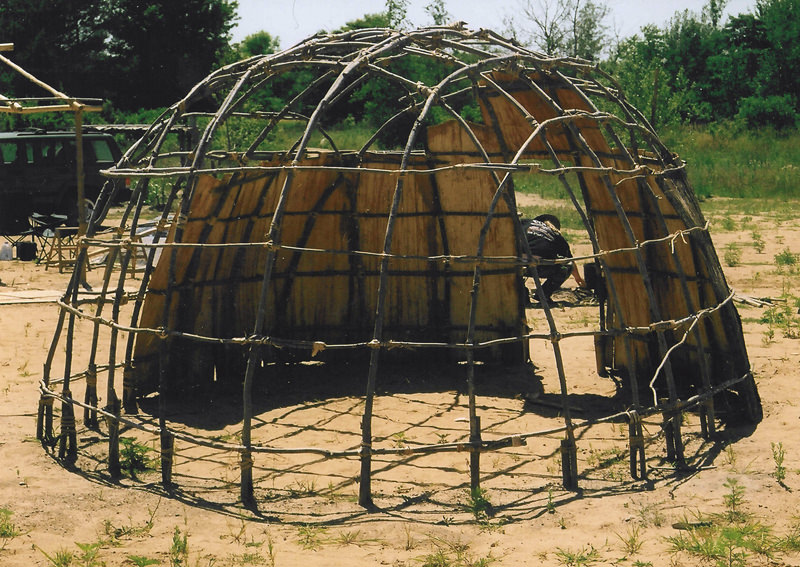
Frame of a wigwam being put up. Photo: Potawatomi Nation Heritage Center
Unlike the geodesic dome popularized by Buckminster Fuller, the wigwam is as simple of a dome structure as it gets. For one wigwam variation just stick some young trees in the ground, bend them into an arch and stick the other end into the ground. Repeat until you have a 360 degree hemisphere.
I’ve also seen a few examples where people use rebar instead of wood. Same principle, just stronger construction that should hold up better to snow.
To take it the final step and make a greenhouse out of it, cover it with polyethene plastic instead of the usual birch bark or animal hide and you’ve got yourself a greenhouse.
2. The Earth-Sheltered Greenhouse
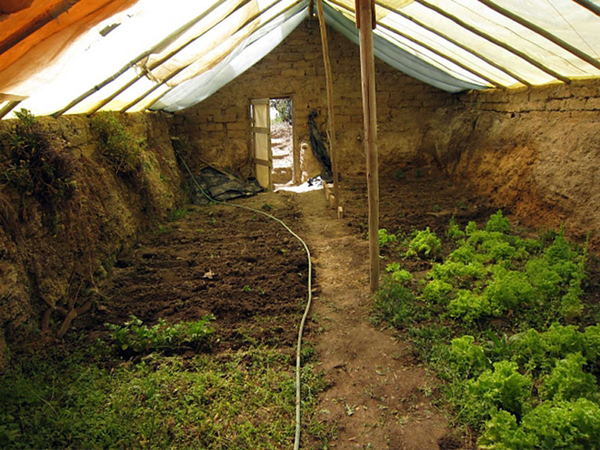
An earth-sheltered greenhouse. Photo: Neo-farms
One of my favorite concepts for both homes and greenhouses, earthen homes are all semi-subterranean houses sheltered by the surrounding earth on three or four sides with a roof on top. The main benefit of the earthen house is that the inside is sheltered from both cold and wind by the earthen insulation.
One popular greenhouse design that fit into this category is the walipini, an underground greenhouse first developed in Bolivia, South America.
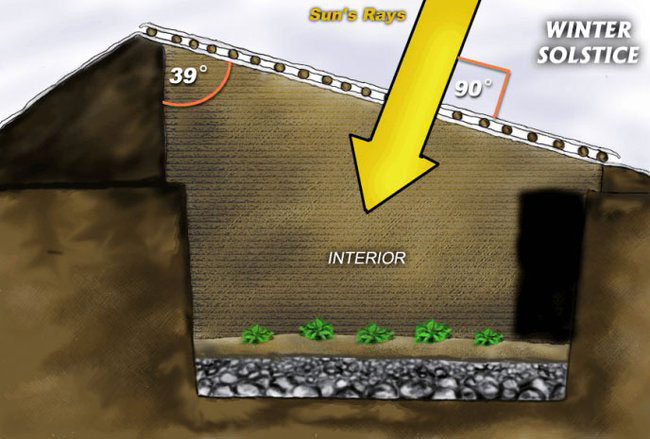
Cut through of an earth-sheltered greenhouse
What makes the earthen greenhouse better than hoop houses and above-ground green houses? First, by locating the growing area 6’- 8’ underground you take advantage of the constant temperature of the earth below the frost level. Second, you can capture and store the daytime solar radiation in the surrounding earth which then radiates back into the greenhouse during the cold winter nights.
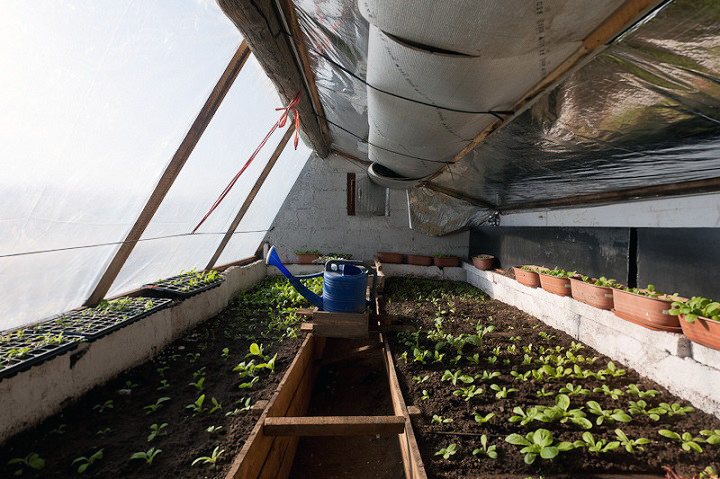
An earth-sheltered greenhouse in Mongolia. Photo: The Green Backpack
3. The Yurt Greenhouse
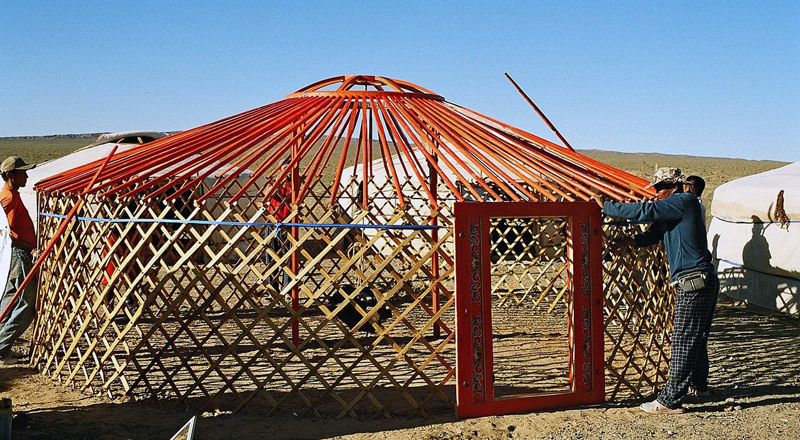
Construction of a Mongolian ger, with roof poles in place. Photo by Tkn20
The yurt is a portable shelter that has been used by nomads on the steppes of Central Asia for at least three thousand years. Traditional yurts consist of an expanding wooden circular frame carrying a felt cover, and complete construction takes as little as 2 hours. For greenhouse purposes one nice bonus of the yurt construction is the 360 degree built in trellis.
We don’t have to imagine what this would look like as a greenhouse, because I found an example of a real life yurt greenhouse on a family farm on the banks of the Baduce river in West Sedgwick, Maine:
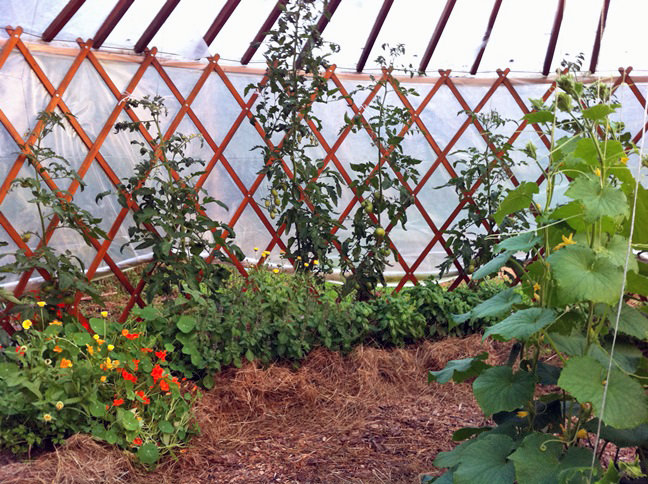
The inside of the yurt greenhouse on Saltgrass Farm. Photo: Circle In
4. The A-Frame Greenhouse
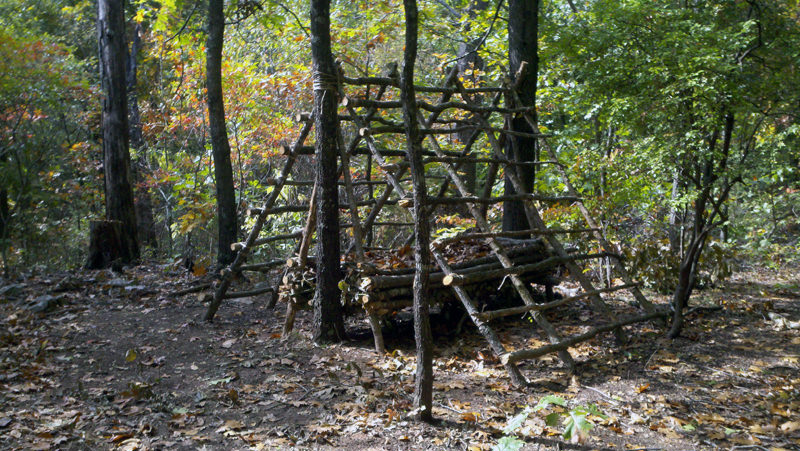
A basic a-frame shelter. Photo: Sigma 3 Survival School.
In its most simple form, the A-frame consists of a horizontal ridge pole or line that you either lean poles on from both directions (thus forming the A shape) or, if you have a soft cover of some kind, you simply put the cover over the pole / line and tighten it on both sides so the cover itself forms the A.
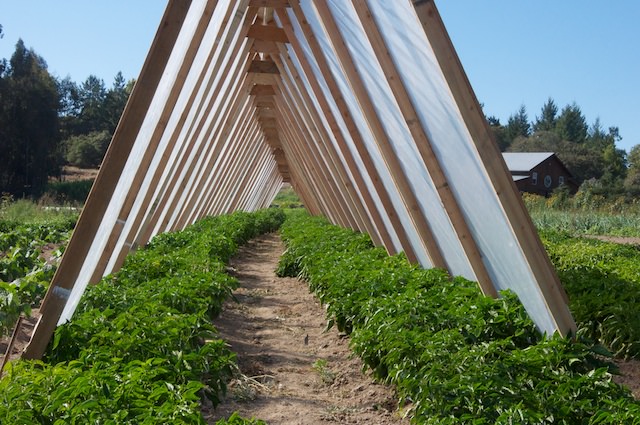
An A-frame greenhouse built at French Garden Farm
Each A-frame is made of 10′ x 10′ panels that are screwed together and staked into the ground with concrete form stakes. We leave the ends open in the summer so that pollinators and beneficial insects can find their way inside and the greenhouse doesn’t overheat. We can also tilt open sections in the middle if it is a particularly hot day.
The results so far are VERY impressive! Primarily we have grown peppers and cucumbers, but also some tomatoes. It is clear from comparing our field plants to the ones in the greenhouse that we should do much more growing in this way.
It costs about a dollar a square foot to build these greenhouses and we expect that the poly will last 4-5 years. We hope the wood frames will hold up longer, but we have used Douglas Fir, which may rot where it touches the ground. Assuming that the lifetime costs are about 15 cents per square foot a year and the possibility to raise 3 crops a year, these greenhouses look like a very good investment with a cost of about 5 cents per square foot per crop.
5. The Lean To Greenhouse
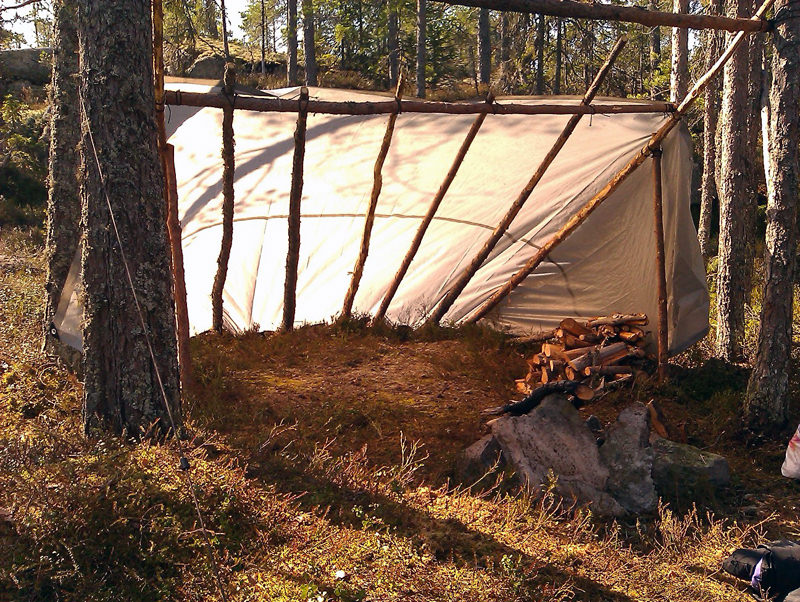
A lean to shelter in Sweden. Photo: Knivbutik.se
The lean to is among the simplest of shelters. You take some poles and lean them towards a tree, a ridge pole or a mountain side. Add some cover on top for wind and rain protection and you’ve got a decent shelter.
As for the lean to greenhouse, that’s also possibly the simplest of all greenhouse designs. Got some old windows? Lean them towards a south-facing wall and cover the side openings and you’ve got a basic lean to greenhouse! If you can get your hands on some old discarded windows for free then you can build a free greenhouse.
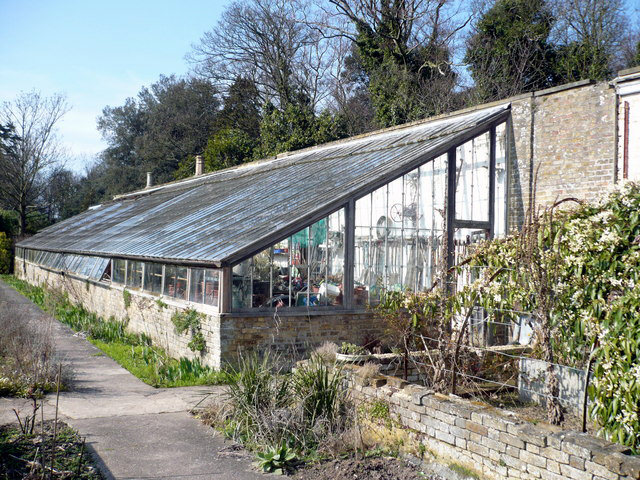
Victorian lean-to greenhouse in the walled garden at Quex Park. Photo: Pam Fray
6. The Tipi Greenhouse
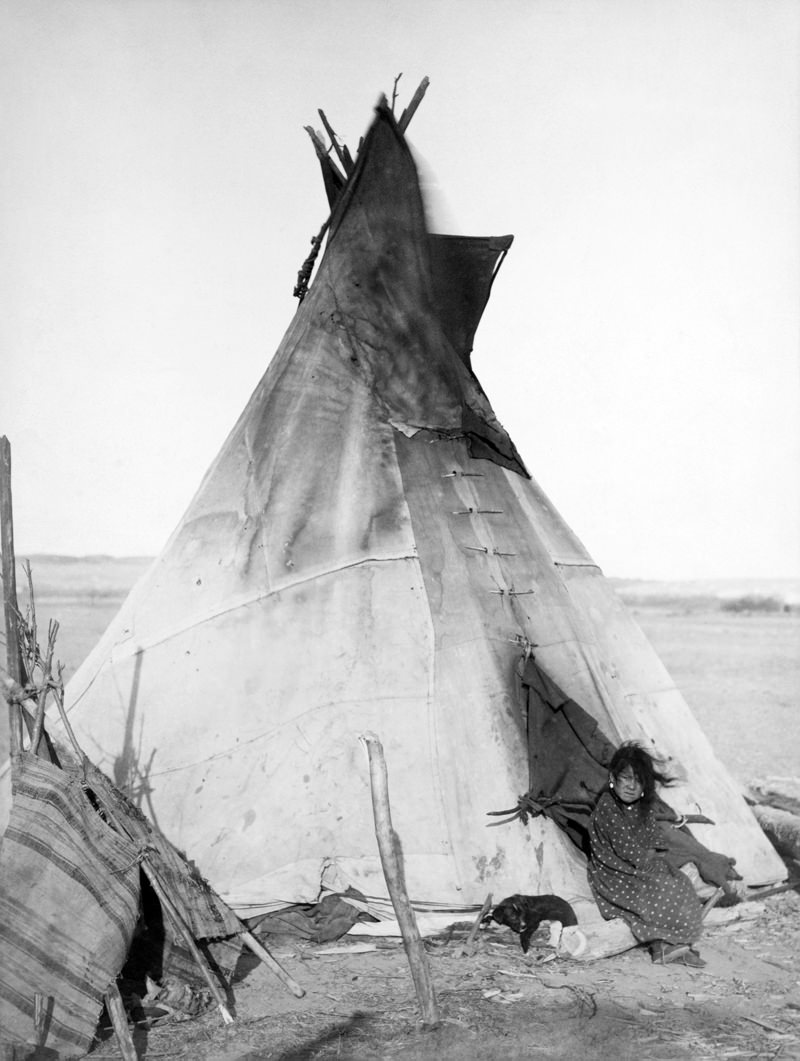
An Oglala Lakota tipi, 1891
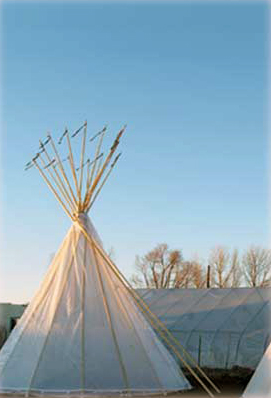
A tipi greenhouse. Photo: Reese Tipis
Tipis are tent-like Native American homes used by Plains tribes. A tipi is made of a cone-shaped wooden frame, commonly cedar or pine poles, with a hide-covering. They usually varied from slightly less than 10 feet in diameter, for hunting expeditions, to permanent lodges with a diameter of more than 30 feet.
Tipis are designed to set up and break down quickly, they can withstand high winds, and when built correctly they have excellent capabilities to control ventilation.
Now, what if you kept the wooden pole frame but switched the buffalo hide for polyethene plastic? You’d have a greenhouse with all the benefits of the tipi.
Mother Earth News writes, “The tipi is not the final answer for everyone, of course (even the Plains Indians built other structures), but it remains — time, money and labor vs. comfort, utility and versatility — probably the world’s most efficient shelter.”
Could it also be the world’s most efficient greenhouse? Frankly, I don’t know. But we won’t know until we try!
Got a flag pole? Then you’re already halfway there!
Some more modern tipi designs, for example the Bell tent, use a central load bearing pole along with tensioned cover to provide a stable structure.
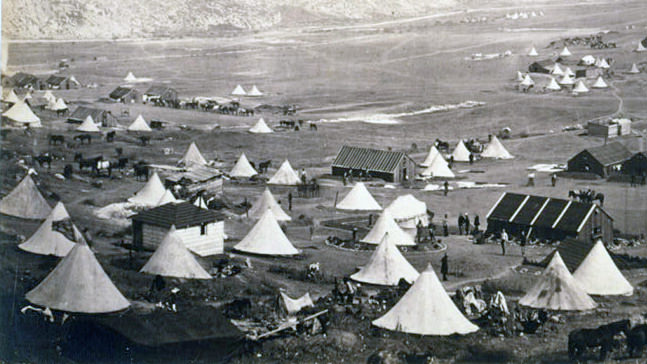
Bell tents used by the British cavalry during the Crimean War in 1855.
It just happens to be that quite a few families already have a flag pole in their backyard that could be used as the center pole of a tipi greenhouse. If you do have a flagpole, all you need to convert it into a greenhouse is the plastic covering and a way to tension the cover so it stays put. You could use lines, pegs in the ground, or even just bury the plastic film in a circular ditch.
If you have an entrepreneurial mindset there might even be an opportunity here to build and sell a flagpole-to-greenhouse conversion set that includes everything you need to build one of these flagpole greenhouses. Your market is only limited by the number of flagpoles in the world.
Got heavy winds? Consider a Lavvu instead of a Tipi
The Lavvu, used by the Sami people of northern Scandinavia and Russia, has a design similar to a Native American tipi but is less vertical and because of this it’s more stable in high winds. Turning it into a greenhouse / cold frame follows the same steps as with the tipi. Change the reindeer hide for polyethene plastic and you’ve got a cheap and simple greenhouse!
Closing Thoughts
The only way to get closer to building the perfect greenhouse, a greenhouse so effective and simple to build that you’ll see one in every backyard, is for regular people like you and me to experiment.
That’s the thing about self-reliance, no politician or big corporation is interested in helping you decrease your dependence on them. You’re on your own in that regard. We all are. But in our mutual loneliness we can find strength and inspiration by sharing our experiences and experiments.
So never stop experimenting! Whether you build a modern high tunnel / polytunnel, or experiment with one of the above examples, or combine several of them into an earth-sheltered lean to tipi greenhouse, experimentation is the only way forward.
If you have some tips to share for building a better greenhouse I’d love to hear about them in the comments below.
So how large of a greenhouse do you need for self-reliance? According to Elliot Coleman “The smallest comfortable size for a food-production greenhouse is about 12 by 12 feet”, but if you have the space he recommends 12 by 20 feet as more servicable and 14 by 20 feet as even better.


